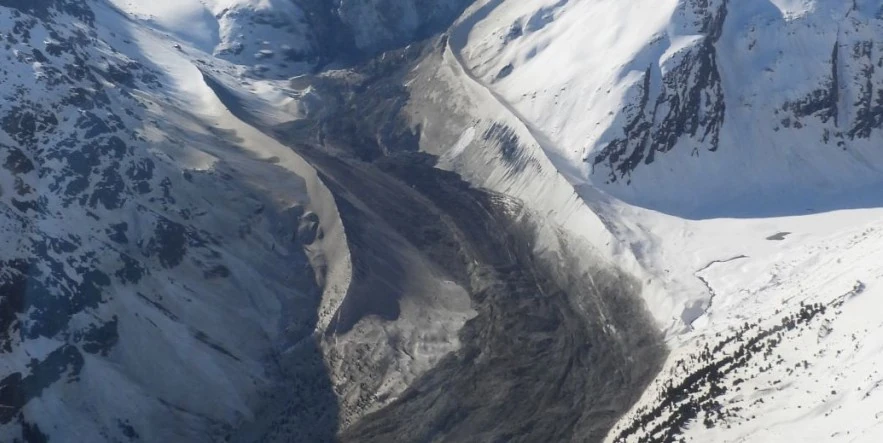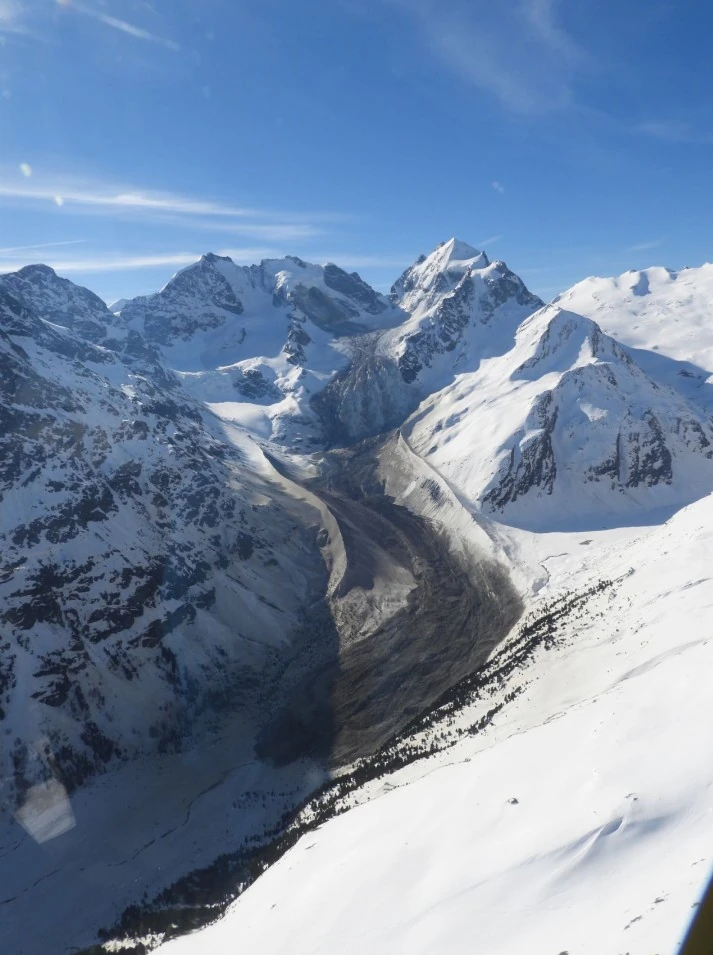Large rock avalanche strikes Swiss Alps near Italian border

A massive rock avalanche descended from Piz Scerscen in the Swiss Alps close to the Italy border at approximately 07:00 LT on April 14, 2024. The event, which was recorded by seismic networks, resulted in no reported casualties.
A significant rock avalanche took place on the slopes of Piz Scerscen, situated in the Swiss Alps near the border with Italy on April 14, with approximately 1 million m³ (35.3 million ft³) of rock detaching from a steeply inclined face of the mountain.
The debris traveled a remarkable distance of 5 km (3.1 miles) from the origin point. The early morning timing likely played a crucial role in preventing any injuries or fatalities, as the area was minimally occupied at the time.
The approach to Chamanna Coaz (along Lej Vadret) as well as all crossings of the Vadret da Tschierva to Piz Roseg, Piz Scerscen and Piz Aguagliouls were affected, according to Schweizer Alpen-Club (SAC) Bernina. The approach to Chamanna Tschierva remained unaffected.
This geological event was of such magnitude that it was registered on seismic instruments across the Alps.
Historically, this particular segment of Piz Scerscen has been prone to landslides. A significant collapse had previously occurred in January 2023, followed by smaller incidents. Dr. Dave Petley of The Landslide Blog noted that these recurring events had prompted warnings to mountaineers to avoid this unstable section of the mountain.
The recent avalanche appears to have been initiated by a collapse of the rockface, which subsequently fragmented at the base of the slope, creating a long runout rock avalanche. Dr. Petley’s preliminary examination suggests that this was a large-scale collapse.
Geological experts point out that such large rock slope failures are more frequent in the spring and early summer months, often triggered by seasonal temperature variations. Europe has recently experienced a period of unusually high temperatures, which may have contributed to the destabilization of the mountain slopes.

Although serious rock avalanches, which permanently alter the landscape and threaten nearby populations’ survival and livelihoods are relatively rare, they are very much a component of natural hazards in the Alps.
According to Switzerland’s National Platform for Natural Hazards, the traces of major rock avalanches in the Swiss Alpine valleys go back to the end of the last ice age. Studies show that around 10 000 years ago approximately 11 – 13 km3 (2.6 – 3.1 mi3) of rock mass fell down into the Rhine valley near Flims following the retreat of the Rhine glacier, making it one of the biggest known rock avalanches in Europe.
One notable event in Goldau resulted in the burial of the old village of Goldau and triggered a tsunami in Lake Lauerz, impacting the opposite shore village of Lauerz as well. More recently, in 1991, Randa witnessed two massive rockfalls in April and May, where approximately 30 million m³ (1.059 billion ft3) of rock descended to the valley, disrupting the river Vispa and essential transport routes.
Advancements in geological monitoring have enhanced the ability to predict rockfalls and avalanches. Signs such as increasing stone and rock movements can indicate imminent danger, allowing for timely interventions like monitoring and evacuations. This proactive approach is crucial for minimizing risks in vulnerable mountainous regions.
References:
1 A large rock avalanche on Piz Scerscen in Switzerland – The Landslide Blog – April 15, 2024
2 Rock avalanches in Switzerland – National Platform for Natural Hazards – Accessed April 15, 2024
Featured image credit: SAC Bernina

Commenting rules and guidelines
We value the thoughts and opinions of our readers and welcome healthy discussions on our website. In order to maintain a respectful and positive community, we ask that all commenters follow these rules.